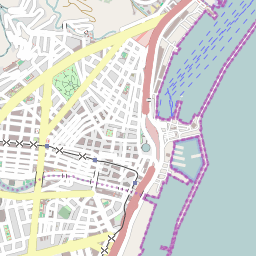CFD Trading
Enjoy the benefits of an internationally regulated broker!
Start today with a huge welcome bonus
Day trading with CFDs is a popular strategy. The leverage and costs of CFD trading make it a viable option for active traders and intraday trades.
What Is A CFD?
A CFD is a contract between two parties. They agree to pay the difference between the opening price and closing price of a particular market or asset. It is therefore a way to speculate on price movement, without owning the actual asset.
The performance of the CFD reflects the underlying asset. Profit and loss are established when that underlying asset value shifts in relation to the position of the opening price.
When trading CFDs with a broker, you do not own the asset being traded. You are speculating on the price movement, up or down.
CFD Example
Let us run through an example of a ‘contract for difference’ (CFD). Say you select a stock with an ask price of $25 and you open a CFD to the value of 100 shares.
If buying shares the traditional way, the cost would be $2,500. There might also be commission or trading costs.
However, a CFD broker will often require just a 5% margin. This will allow you to enter the same trade but with only $125. (Actual levels of leverage or margin will vary). This makes it an attractive hunting ground for the intraday trader. The risk and reward ratio is increased, making short term trades more viable.
When you enter your CFD, the position will show a loss equal to the size of the spread. This means if the spread from your broker is 5 cents, you’ll need the stock to appreciate by at least 5 cents to break even.
CFD vs Stock
Using the above example: Let’s say the price of the underlying stock continues to increase and reaches a bid price of $26.00
If you owned the stock, your holding is now worth $2600. A nice profit – ignoring commission or trading costs the trader realised $100.
However, with the underlying stock at $26.00, the CFD would show the same $100 profit – but it required way less to open, just $125. So in terms of percentage, the CFD returned much greater profits. Had the market moved the other way, losses relative to our investment would have been larger too – both risk and reward are increased.
There are of course other benefits to owning an asset rather than speculating on the price. We also ignored commissions and spreads for clarity. But the above does illustrate the relative differences in the two methods of investing.
Application
As you are day trading you probably won’t hold any CFD positions overnight. Instead, you’ll likely place a high number of CFD trades in a single day. To maximise your returns you’ll want to concentrate on liquid volatile markets. CFD trading with oil, bitcoin, and forex are all popular options, for example.
A wide selection of investment product to help build diversified portfolio
Powerful trading tools, resources and support
Dedicated financial consultant to help reach your own specific goals
